
Botany in Vedas
ABOUT THE AUTHOR____________

Dr Prashant Kumar Mishra is Associate Professor in Botany at Vinoba Bhave University, Hazaribag (Jharkhandj) and is having over 34 years of teaching and research experience. He has extensively studied different aspects of plant diversity and other aspects of environmental science which is evidenced by more than 80 research papers and tree books to his credit. Dr. Mishra has attended 10 research scholars for their doctoral degree, attended over fifty national and international seminars and completed six research projects sponsored by national and international agencies. Dr. Mishra has deep interest in description of plant present in ancient Sanskrit literature. Rastriya Sanskrit Sansthan, New Delhi has awarded Sanskrit Seva Varati award for his contribution in popularisation of rare work Vrikshayrveda and scientifically validating some of its prescriptions. Open International University, Colombo, Sri Lanka has awarded degree of Doctor of Science (honoris causa) for his work on indigenous herbal medicinal system. Sandipani Ved Vigyan Sansthan, Ujjain has conferred Ved Nipun degree on Dr. Mishra.
Present book is an attempt to correlate plant sciences found in Vedas with modern day Botany.
Botany in Vedas
Dr. Prashant Kumar Mishra
2016
 Educationist Press
Educationist Press
A Division of
 Write & Print Publications
Write & Print Publications
New Delhi-110 015
2016 EDITORS
ISBN: 978-93-84649-32-6
Publishers note:
Every possible effort has been made to ensure that the information contained in this book is accurate at the time of going to press, and the publisher and editors cannot accept responsibility for any errors or omissions, however caused. No responsibility for loss or damage occasioned to any person acting, or refraining from action, as a result of the material in this publication can be accepted by the editors, the publisher or the authors. The Publisher is not associated with any product or vendor mentioned in the book. The contents of this work are intended to further general scientific research, understanding and discussion only. Readers should consult with a specialist where appropriate.
Every effort has been made to trace the owners of copyright material used in this book, if any. The editors and the publisher will be grateful for any omission brought to their notice for acknowledgement in the future editions of the book.
All Rights reserved under International Copyright Conventions. No part of this publication may be reproduced, stored in a retrieval system, or transmitted in any form or by any means, electronic, mechanical, photocopying, recording or otherwise without the prior written consent of the publisher and the copyright owner.
| Published by | : | Hitesh Mittal |
For Write & Print Publications
H-13, Bali Nagar
New Delhi-110 015
Phone: 011-45635684
E-mail:
Website: www.writeandprint.com |
| Laser Typesetting | : | Rajender Vashist
Delhi - 110 059 |
| Printed at | : | Salasar Imaging Systems
Delhi - 110 035, Phone: 011-27185653 |
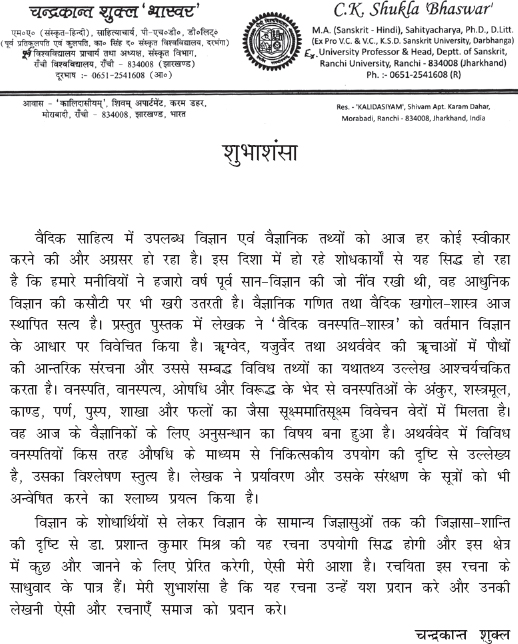
Preface
The word Veda is derived from Sanskrit Vid which means to know. Hence the four Vedas are the ultimate repository of knowledge. Knowledge is generally classified into two classes - The inner knowledge or the Sukshma Gyan and the outer knowledge or Sthool Gyan. The inner knowledge refers to psycho - spiritual knowledge which properly guides human being regarding
ideal and pious way of living. The outer knowledge is knowledge regarding material and its functions. The second form of knowledge roughly parallels to modern day science. Veda has been wrongly considered, for a long time as literature related to inner knowledge only. Off late however scholars have started acknowledge value of outer knowledge i.e. science present in four
Vedas and now literature regarding this rather neglected aspect of Veda is accumulating.
Science, in fact is a process of truth seeking and for this both observational as well as experimental studies are performed. Veda consider and visualise this universe as multidimensional reality and explain it in same perspective. In that sense, Rug Veda is undoubtedly the earliest textual source of science followed by other three Vedas - Atharw Veda, Yajur Veda and Sam Veda. So far subject area of science in Vedic literature is concerned, list is very long and almost all aspects of modern science and technology is discussed
here. Mathematics, Physics, Chemistry, Astronomy, Medicine, Surgery, Plant Science, Microbiology, Environmental Science etc. has been vividly described in, Vedas. Critics of Vedic science and some conservative modern scientists often question authenticity of various descriptions in the name of standardisation. The fact is that our understanding and analytical capacity is still restricted and fail to match with very high standard of Vedic literature. The very style of Vedic hymns is symbolic and poetic. Deciphering the exact meaning of Vedic hymns is a rather difficult task. In most of the cases, one hymn of Veda can be interpreted differently and has got different meaning as. well. Although touching all aspects of Vedic science is not possible, the present work is confined to plant science and environmental science only.
Proper screening of Veda clearly indicates that there is hardly any aspect of Botany which has not been scientificallv described in Vedic literature. Several terminology of plant anatomy and plant physiology present in Vedas are not only scientific but are being used in modern Botany as well. It is noteworthy that sophisticated equipments and microscopy was not available then. We come across some highly scientific details regarding environmental science and regarding suggesting ways to properly manage it. Problems like population boom, ind.ustrialisation, pollution and land degradation was not faced by people of Vedic era. Even though our ancient sages were highly sensitive for ecological health of universe and had formulated various prescriptions to maintain ecological balance. Climate change vis-a-vis ozone layer is a recent introduction to scientific world. Although it will be hard to believe most of modern scientists, some references of protective layer of earth is found in ~ug Ve.d and Yajur Veda. Health management with the help of medicinal plants is another area where unparallel records are found in Rug Veda and Atharw Veda. The medicinal uses and valuable chemicals of those plants have been validated by modern scientific technology like gas chromatography and atomic absorption spectrophotometry. Clinical trials have also proved Vedic recommendations right.
Scientific value of Vedic literature with special reference to Botany and Environmental Science is now unchallenged. It is rather high time, we should work hard for scientific and unbiased interpretation of Vedas and to validate the same on the basis of modern tools and techniques. Undoubtedly, it will open a new vista and add new dimension to modern plant science. Possibly Vedic Botany will guide modern plant scientists something new and valuable for human welfare may come out. There is urgency to support research and start a new discipline, Vedic Botany.
Next page
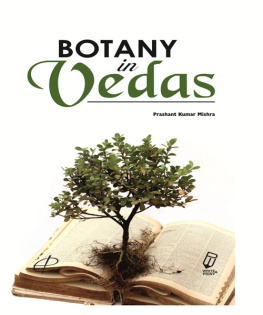
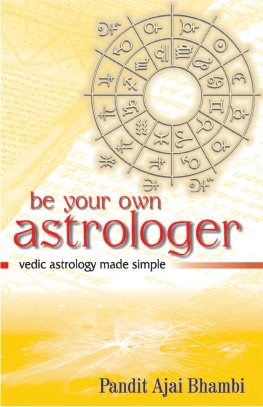
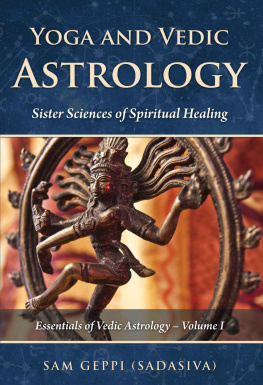
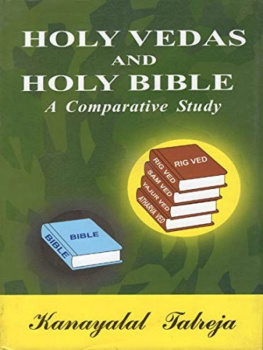
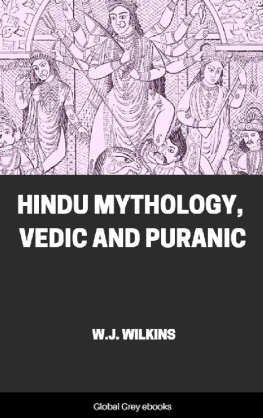

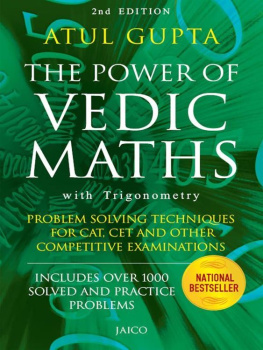
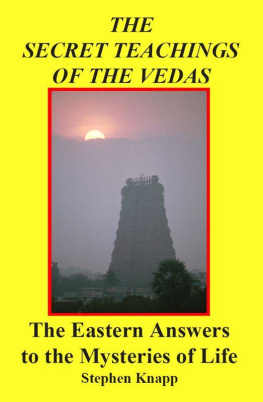
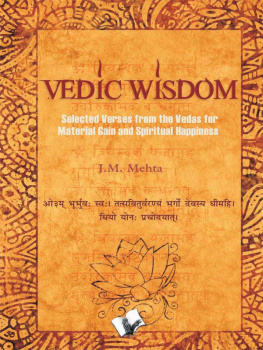
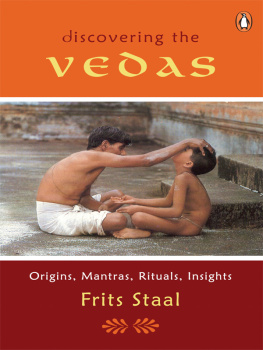



 Educationist Press
Educationist Press Write & Print Publications
Write & Print Publications